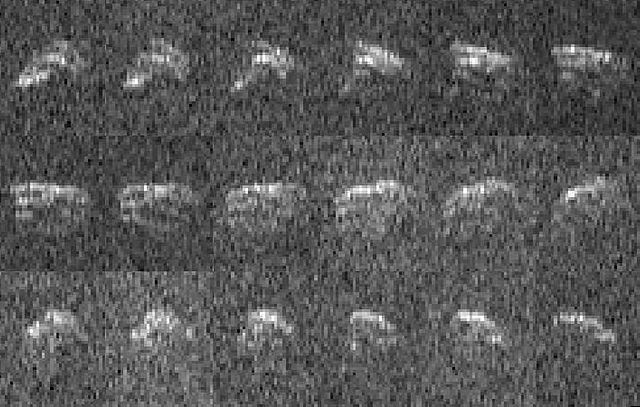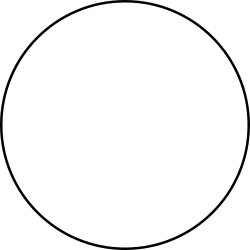Top Qs
Timeline
Chat
Perspective
List of asteroid close approaches to Earth in 2013
From Wikipedia, the free encyclopedia
Remove ads
Below is the list of asteroid close approaches to Earth in 2013. This was the year of the Chelyabinsk impact, in addition to the other NEO flybys
Remove ads
Timeline of known close approaches less than one lunar distance from Earth in 2013
Summarize
Perspective
A list of known Near-Earth asteroid close approaches less than 1 lunar distance (384,400 km or 0.00257 AU) from Earth in 2013, based on the close approach database of the Center for Near-Earth Object Studies (CNEOS).[1]
The CNEOS database of close approaches lists some close approaches a full orbit or more before the discovery of the object, derived by orbit calculation. The list below only includes close approaches that are evidenced by observations, thus the pre-discovery close approaches would only be included if the object was found by precovery, but there was no such close approach in 2013.
This list and relevant databases do not consider impacts as close approaches, thus the list does not include any of the 24 objects that collided with Earth's atmosphere in 2013, none of which were discovered in advance, but were observed visually or recorded by sensors designed to detect detonation of nuclear devices. Of the 24 objects so detected, 5 had an impact energy greater than that of a 1 kiloton device including the 440 kiloton Chelyabinsk meteor, estimated at 20 m in diameter, which injured around 1500 people and damaged over 7000 buildings. [2][3][4]
Rows highlighted red indicate objects which were not discovered until after closest approach
Rows highlighted yellow indicate objects discovered less than 24 hours before closest approach
Rows highlighted green indicate objects discovered more than one week before closest approach
Rows highlighted turquoise indicate objects discovered more than 7 weeks before closest approach
Rows highlighted blue indicate objects discovered more than one year before closest approach
(i.e. objects successfully cataloged on a previous orbit, rather than being detected during final approach)
Warning times by size
This sub-section visualises the warning times of the close approaches listed in the above table, depending on the size of the asteroid. The sizes of the charts show the relative sizes of the asteroids to scale. For comparison, the approximate size of a person is also shown. This is based the absolute magnitude of each asteroid, an approximate measure of size based on brightness.
Absolute magnitude 30 and greater

(size of a person for comparison)
Absolute magnitude 30 > H ≥ 29
Absolute magnitude 29 > H ≥ 28
Absolute magnitude 28 > H ≥ 27
Absolute magnitude 27 > H ≥ 26
(probable size of the Chelyabinsk meteor)
Absolute magnitude 26 > H ≥ 25
None
Absolute magnitude 25 > H (largest)
- After closest approach: 1 (50.0%)
- < 24 hours before: 0 (0.0%)
- up to 7 days before: 0 (0.0%)
- > one week before: 0 (0.0%)
- > 7 weeks before: 1 (50.0%)
- > one year before: 0 (0.0%)
Notes
- Distance from the center of Earth to the center of the object. See the NASA/JPL Solar System Dynamics Glossary: Geocentric. Earth has a radius of approximately 6,400 km.
Remove ads
Additional examples


An example list of near-Earth asteroids that passed more than 1 lunar distance (384,400 km or 0.00256 AU) from Earth in 2013.
- 2013 XH22, December 18, 2013 (1.9 LD)
- 2013 XY8, December 11, 2013 (2 LD)
- 3361 Orpheus, December 7, 2013 (40.1 LD)
- 2001 AV43, November 18, 2013 (3 LD)
- (52760) 1998 ML14, August 24, 2013
- (277475) 2005 WK4, August 8, 2013[32]
- 2003 DZ15, July 30, 2013[33]
- 2006 BL8, July 26, 2013[33]
- 2009 FE, June 4, 2013[33]
- (285263) 1998 QE2, May 29, 2013
- (163364) 2002 OD20, May 23, 2013
- (7888) 1993 UC, March 20, 2013
- 2013 ET, March 9, 2013
Remove ads
See also
References
External links
Wikiwand - on
Seamless Wikipedia browsing. On steroids.
Remove ads





